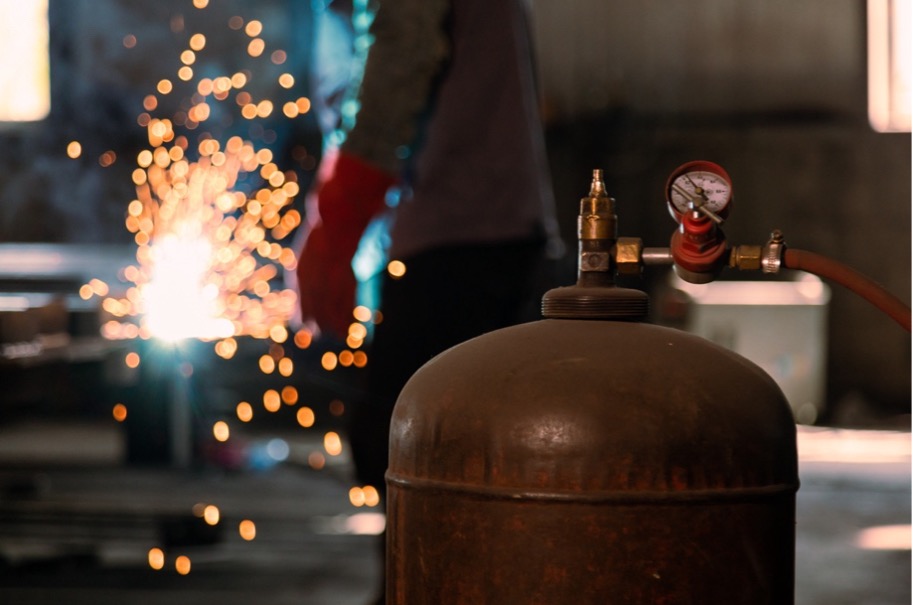 Add My Company
Add My Company
Future Trends in Welding Gases

What trends are shaping and revolutionising the welding industry and its future? Technological developments, innovative smart processes, and growing environmental concerns are presenting both challenges and opportunities for the sector, and in such an evolving landscape, the demand for advanced welding gases is rapidly increasing.
As experienced bottled gas suppliers, we want to share with you how future trends in welding gases can benefit both professionals and businesses by helping them stay competitive in an overcrowded market with informed decisions about new processes, weld quality, safety, or efficiency.
The Latest Advancements in Welding Gas Mixtures
Gas mixtures are one of the most relevant trends in the welding industry, which is why we will start our exploration by discussing them. What are they, and how do they compare with traditional TIG gases and MIG welding gases?
Basically, gas mixtures are gases used in welding, such as argon, helium, and CO2, optimised with specific additives and other components to improve their performance. The obtained mixtures are designed to stabilise the arc and reduce spatter during processes, enhancing the overall weld quality. For instance, adding small amounts of hydrogen to argon for TIG welding can improve both penetration and bead appearance, making it suitable for various applications, including stainless steel welding. Additionally, customised gas mixtures are developed with versatility in mind to suit very specific needs, such as aluminium welding; here, porosity is drastically reduced, and welds are much cleaner.
The ongoing research in this area will produce unique gas combinations that will enhance the efficiency of the welding process and achieve more precise and consistent results.
Navigating Environmental and Safety Regulations
As environmental concerns increase globally, more industries and businesses are switching to more sustainable solutions to create a greener future. With governments worldwide adopting new policies and regulations to reduce greenhouse gas emissions and promote workplace safety, the welding industry is demanding gases that are both safe and eco-friendly to lower the overall environmental impact and pose fewer health risks to workers.
In response to these regulations, manufacturers across the world are developing innovative welding gases that release fewer harmful byproducts and do not deplete the ozone layer. For example, using argon-based mixtures instead of pure CO2 can dramatically reduce the production of hazardous carbon monoxide and other toxic gases. All these changes not only help businesses comply with strict regulations but also improve the overall safety and health conditions of their workers, resulting in a double win.
Advanced Innovations in Gas Delivery Systems
Gas delivery systems are another area of the welding industry that is seeing a significant upgrade. Let’s look into the latest innovations that are enhancing productivity, cost-effectiveness, and safety across the entire sector.
- Traditional industrial gas cylinders are being replaced or integrated by more advanced delivery systems, such as gas mixers, that allow for extremely precise adjustment of gas mixtures in real time and incredibly accurate welding operations.
- Portable gas bottles and compact gas storage systems are also gaining traction due to their user-friendly, manageable, and practical nature, which makes welding activities of all sizes possible.
- The integration of IoT (Internet of Things) technology in gas delivery systems is also on the rise, enabling effective remote monitoring and management of gas usage.
The Rise of Automation and Robotics for Welding Systems
The shift towards automation and robotics is transforming manufacturing and a vast number of other industries, including welding. We are living in an era where artificial intelligence (AI), automated processes, and smart features flawlessly integrate human labour, resulting in improved productivity, efficiency, and competitiveness. The introduction of automation and robotics is the main focal point in the welding sector.
Automated welding systems require precise control over gas flow and composition to achieve consistent results; as such, the development of specialised gases compatible with robotic welding applications is a growing area of focus for engineers and scientists alike.
As mentioned earlier, new gas mixtures reduce spatter and improve weld quality, which benefits robotic systems. This leads to faster welding speeds with fewer defects and rework, which is particularly important in high-volume manufacturing environments, where efficiency and consistency are non-negotiable.
Exploring the Development of Green Welding Gases
With sustainability as a top priority, the development of green gases to reduce welding’s carbon footprint is gaining significant momentum. These eco-friendly gases are specifically designed to have a minimal environmental impact, both in terms of production and usage.
One promising development in this area is the use of renewable gases, such as hydrogen, produced from renewable energy sources. In fact, hydrogen is extremely valuable as it can be used as a welding gas on its own or as part of a gas mixture, providing a greener alternative to traditional gases. Aside from hydrogen, researchers are also exploring how to capture and reuse the carbon dioxide produced during welding processes, which is extremely innovative. It is clear how all these new solutions and techniques centred on green gases are not only a response to regulatory pressures but also a reflection of the industry’s valuable commitment towards sustainability and progress.
For more information on Future Trends in Welding Gases talk to Adams Gas







